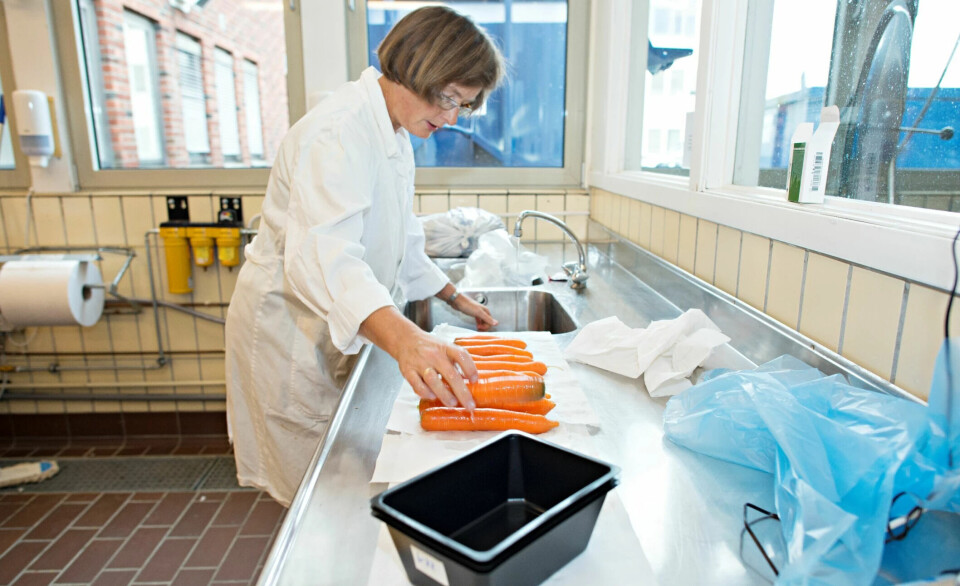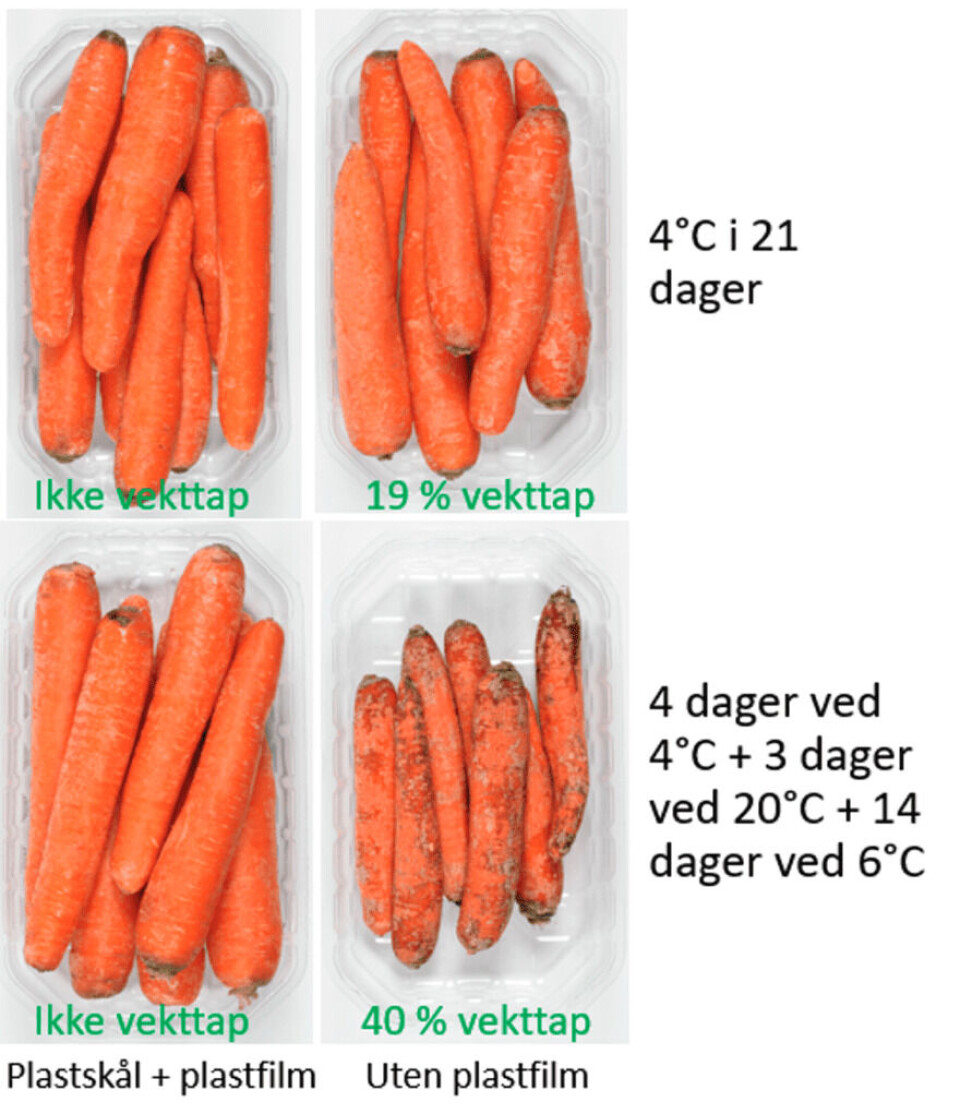THIS CONTENT IS BROUGHT TO YOU BY Nofima The Norwegian Institute of Food, Fisheries and Aquaculture Research - read more

How can we avoid wrinkly carrots?
Researchers have studied how fruit and vegetables react under different storage conditions.
Fruit and vegetables contain a lot of water and continue to 'breathe' after they have been harvested. They therefore quickly become wrinkly and deteriorate in quality if the temperature is too high or the packaging is inadequate.
The general advice for maintaining quality is to store fruit, berries, and vegetables at cool temperatures, around 10°C or in a refrigerator at around 4°C. The products that are not packaged are particularly susceptible to weight loss and drying out. The drying out process occurs much faster at high storage temperatures.
Not all types of vegetables are equally susceptible to drying out. Tomatoes, for example, are less susceptible.
Nevertheless, packaging has a protective effect. It reduces the risk of damage during handling and transport. Damage is a major reason why tomatoes and other vegetables deteriorate faster.
Different vegetables require different storage
“Among other things, we tested carrots, red peppers, cucumbers, and tomatoes. Carrots, red peppers, and cucumbers last longer when packaged in plastic. How tomatoes should be stored varies depending on the variety,” senior researcher Hanne Larsen at Nofima says. She has led the research work.
Different vegetables require different storage. Carrots and swedes last longer when stored in refrigerators, while tomatoes, cucumbers, and peppers benefit from cool storage (10 °C).


Plastic prevents moisture loss and keeps products firm and crisp. However, high moisture levels inside the plastic can stimulate microbial growth, especially when stored at 10°C.
“There may also be differences between different varieties of the same type of vegetable. Mini plum tomatoes, for example, have a relatively thick skin and can withstand storage for an extended period of time at a high temperature before they suffer a significant weight loss. Romanse tomatoes have stems and are more susceptible to mould growth on the stems under less favourable storage conditions,” researcher Kjersti Aaby says.
Storage in grocery stores is of great importance
A lot of fruit and vegetables are stored at room temperature in stores. This has a negative effect on the quality. Even a short period at room temperature can ‘stress’ fruit and vegetables, and increase respiration. This reduces quality and shelf life, and increases the risk of food waste.
For example, carrots dry and shrivel quickly at room temperature, especially if they are not packaged in plastic. Researchers at Nofima stored several packages of carrots under different conditions for 21 days.
“During the 21 days, the carrots that were stored for three days at room temperature and without being packaged in plastic lost 40 per cent of their weight. The weight loss was 19 per cent for the carrots that were stored at a cold temperature throughout the entire period. Carrots packaged in plastic did not lose any of their weight, but those that were stored for three days at room temperature were more prone to developing rot and sprouting,” Hanne Larsen says.
A few days of storage at room temperature also resulted in deterioration of the quality of swedes, especially small swedes, according to Kjersti Aaby.
For example, the weight loss of small swedes was 32 per cent after being stored for three days at room temperature followed by cold storage for three weeks. Large swedes, on the other hand, only lost 19 per cent of their weight when stored under the same conditions.

Do they need to be packaged in plastic?
There is great scepticism towards plastic packaging, and it is important to document whether plastic packaging is necessary and whether it contributes to better shelf life and less food waste. That was the goal of the project HoldbarSjekken.
BAMA was the project owner, and in collaboration with Nofima and other project partners, they have developed a knowledge-based test system for selecting the right packaging for fruit and vegetables. The purpose of the system is to streamline testing of future packaging solutions for existing and new products.
Systematic shelf life studies have been carried out to compile documentation that shows the shelf life of selected products. These were stored in plastic, fibre, and without packaging under optimal and more realistic temperature conditions.
Weight loss and changes in sensory characteristics such as taste, smell, or texture were regularly recorded during the storage period. The relevant sensory characteristics were adapted to each product and were in accordance with BAMA’s quality requirements and tolerance levels.

This content is paid for and presented by Nofima The Norwegian Institute of Food, Fisheries and Aquaculture Research
This content is created by Nofima's communication staff, who use this platform to communicate science and share results from research with the public. Nofima is one of more than 80 owners of ScienceNorway.no. Read more here.
More content from Nofima:
-
Red algae grown in wastewater from fish-farming facilities could become sustainable salmon feed
-
Pumpkins are good for more than just Halloween decorations
-
This is how temperature affects a salmon's health and growth
-
Study: Omega-3 and zinc is a powerful duo for salmon
-
Fish may turn yellow if frozen too fresh
-
Is it better if food is packaged in plastic or paperboard?





































